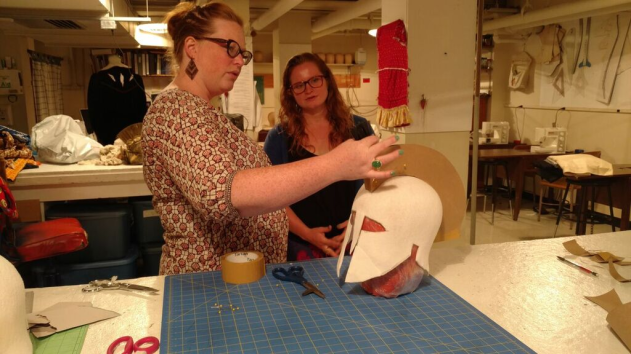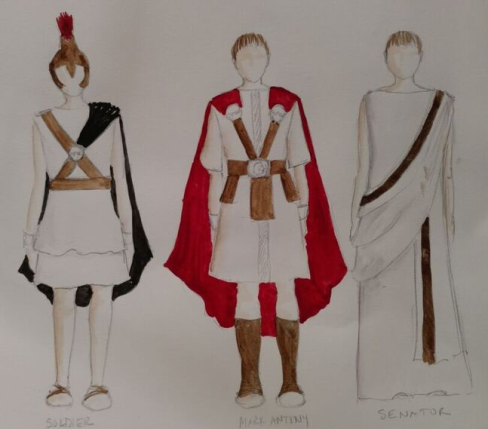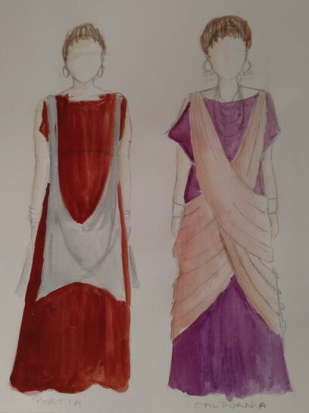
[Costume Designer Becky Bodurtha shows intern Lucie Alden how to create a Roman helmet.]
Each week leading up to the show, Vermont Shakespeare Festival will highlight one aspect of the production process. This Monday is spotlight on costume design with our talented costume designer Becky Bodurtha and her costume design intern, Lucie Alden.
How long have you been with the Vermont Shakespeare company and involved in theater in general?
I started sewing when I was 5 or 6 and officially started costume design in college. I never knew you could be a costume designer for a living. I always did theater and costume design for theater in high school but I didn’t know you could do it for life. When I figured that out things got a lot easier!
My first season with Vermont Shakespeare was in 2010 with the show Much Ado About Nothing and I’ve been the costume designer ever since then. Next season I designed costumes for The Tempest, then The Winter’s Tale, A Midsummer Night’s Dream, and Romeo & Juliet. Some of the The Winter’s Tale and Romeo & Juliet costumes may make an appearance in this summer’s production of Julius Caesar.
What inspired you in these designs?
They’re mostly just simple Roman feel. I wanted to leave the costumes simple and open for the play to live in. I do love texture and pattern, so there’s a lot of stripes in this play because stripes feel organized and powerful. And the roman culture feels ordered and powerful. The costumes are meant to give us context and foundation for the Roman time period. They shouldn’t be too extravagant. In some plays it’s all about the costumes; the costumes are highly important; they carry the play, but in our play the politics and power are more important. I don’t want the costumes to overshadow that.

Some women are playing male roles–did that change how you designed their costumes in any way?
It doesn’t change how I design the costumes. I would still choose the same fabrics if they were men, but it does change how the costumes are built. Women are smaller, so their costumes need to give them the gravitas to stand up against the men on stage and fill the same space.

How practical was ancient Roman clothing? How could they fight when they were in dresses?
It’s totally practical because when they were in battle their tunics were short. Their concept of modesty was totally different from ours so nudity and flashing were not problematic. Women were still very covered though because women were property to the men.
What types of clothes can people buy today to mimic ancient Roman fashion?
Everything. I mean, there are gladiator sandals, Roman-inspired jewelry, cuffs, armbands, tunic dresses. Clothes are really easy these days and a lot of clothes are just basic squares with a hole cut in, which is basically the Roman toga.
Along with Becky is her assistant, one of Vermont Shakespeare Festival’s interns and a student of our summer training institute.
How did you get involved in this production, Lucie?
I started out in 4-H, which was a youth organization that teaches you really good life skills, and sewing is one of the curriculums that is very well developed there. I started when I was 6 or 7. Becky was actually involved in the 4-H program with me. I’ve always done theater too. It was more like a hobby though until I came to university and found costume design as a career. It really clicked with me this past year.